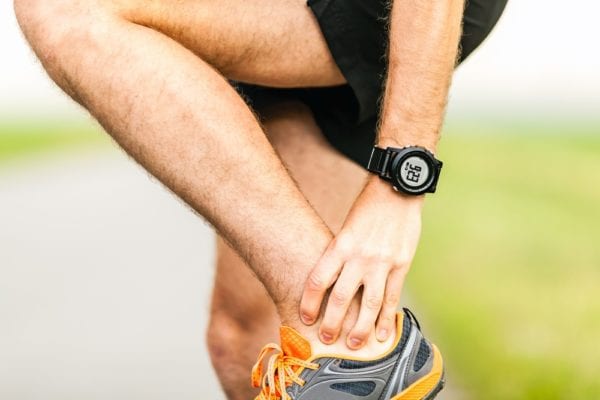
Plantar Fasciitis is a condition of the foot that is closely associated with rheumatoid arthritis. This may surprise some people who suffer from one or both conditions. Yet nearly a quarter of people in the U.S. suffer from foot pain, and these types of conditions only get worse with age.
Certain forms of arthritis commonly affect the feet, including rheumatoid arthritis, osteoarthritis, gout, and psoriatic arthritis. Since the feet have so many bones and joints, this area of the body is particularly susceptible to arthritic conditions.
The purpose of this article is to provide information about plantar fasciitis and how people who suffer from rheumatoid arthritis can prevent and manage this painful condition.
What Is Plantar Fasciitis?
Plantar Fasciitis is a condition typically marked by pain on the bottom of the foot and near the heal.1,2,3 It is typically the most painful just after an individual wakes up and takes the first few steps in the morning.4 However, prolonged, sitting and standing can trigger this type of pain.
Also, the period of time right after exercise is often very painful for people with plantar fasciitis. In people with rheumatoid arthritis, the symptoms are often swelling and stiffness in the feet, pain in the ball or the sole of the foot, and joint deformation in the feet.5
Causes of Plantar Fasciitis
Tension and stress in the feet can lead to tears in the fascia and plantar fascia pain.3 Normal plantar fascia absorbs shock and supports the foot’s arch. However, repetitive motions can cause this part of the foot to become inflamed and irritated.
Age, heavy body weight and the shape of the foot can influence the onset of this condition. People who have jobs that require them to work on their feet, like teachers and factory workers, are more prone to plantar fasciitis. Also, some types of exercise, like aerobic dancing and long-distance running, can lead to this condition.
How Rheumatoid Arthritis and Plantar Fasciitis are Connected
Rheumatoid arthritis is a chronic condition that affects the joints and often affects the small joints located in the feet.6 This condition causes inflammation of the joints and surrounding tissues, and this inflammation makes rheumatoid arthritis sufferers more prone to plantar fasciitis.3
The most common symptoms associated with these two concurrent conditions is heel pain. It is common for rheumatoid arthritis patients to form corns and bunions on their feet.7 Additionally, these individuals may experience curled toes and stiff toes that result in claw toes and hammer toes.
The Role of Exercise in Preventing Plantar Fasciitis
One way that people with rheumatoid arthritis can prevent or delay the onset of plantar fasciitis is to exercise on a regular basis.3,4,6 But of course, it is important to exercise with extra caution to not exacerbate the symptoms and long-term consequences.
Arthritis relief creams like JointFlex may help to alleviate symptoms of rheumatoid arthritis; however, additional treatment may be needed for plantar fasciitis symptoms. Individuals who experience persistent foot pain should speak to a primary care physician or specialist about the possible causes and whether arthritis could be to blame.
REFERENCES for RA SUFFERERS…PLANTAR FASCIITIS
1. Plantar fasciitis. MedlinePlus. Retrieved October 19, 2018 from https://medlineplus.gov/ency/article/007021.htm.
2. Plantar fasciitis. Johns Hopkins Medicine. Retrieved October 17, 2018 from https://www.hopkinsmedicine.org/healthlibrary/conditions/orthopaedic_disorders/plantar_fasciitis_22,PlantarFasciitis.
3. Plantar fasciitis: Quick facts. The Merck Manual: Consumer Version. Retrieved October 18, 2018 https://www.merckmanuals.com/home/quick-facts-bone,-joint,-and-muscle-disorders/foot-problems/plantar-fasciitis.
4. Plantar fasciitis. American Orthopaedic Foot & Ankle Society. Retrieved October 18, 2018 from http://www.aofas.org/footcaremd/conditions/ailments-of-the-heel/pages/plantar-fasciitis.aspx.
5. The foot and rheumatoid arthritis. National Rheumatoid Arthritis Association. Retrieved October 18, 2018 from https://www.nras.org.uk/the-foot-and-rheumatoid-arthritis.
6. Kontzias, A. (2017 July). Rheumatoid arthritis (RA). The Merck Manual: Consumer Version. Retrieved October 17, 2018 from https://www.merckmanuals.com/home/bone,-joint,-and-muscle-disorders/joint-disorders/rheumatoid-arthritis-ra.
7. Arthritis & diseases that affect the foot. Arthritis Foundation. Retrieved October 18, 2018 https://www.arthritis.org/about-arthritis/where-it-hurts/foot-heel-and-toe-pain/causes/foot-diseases.php.
